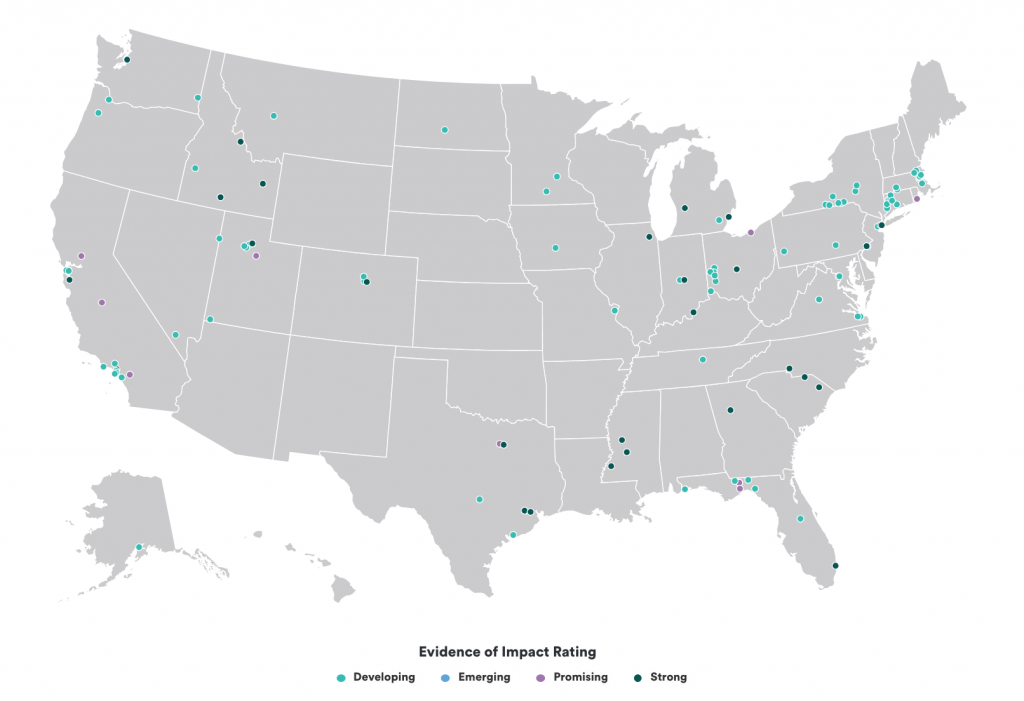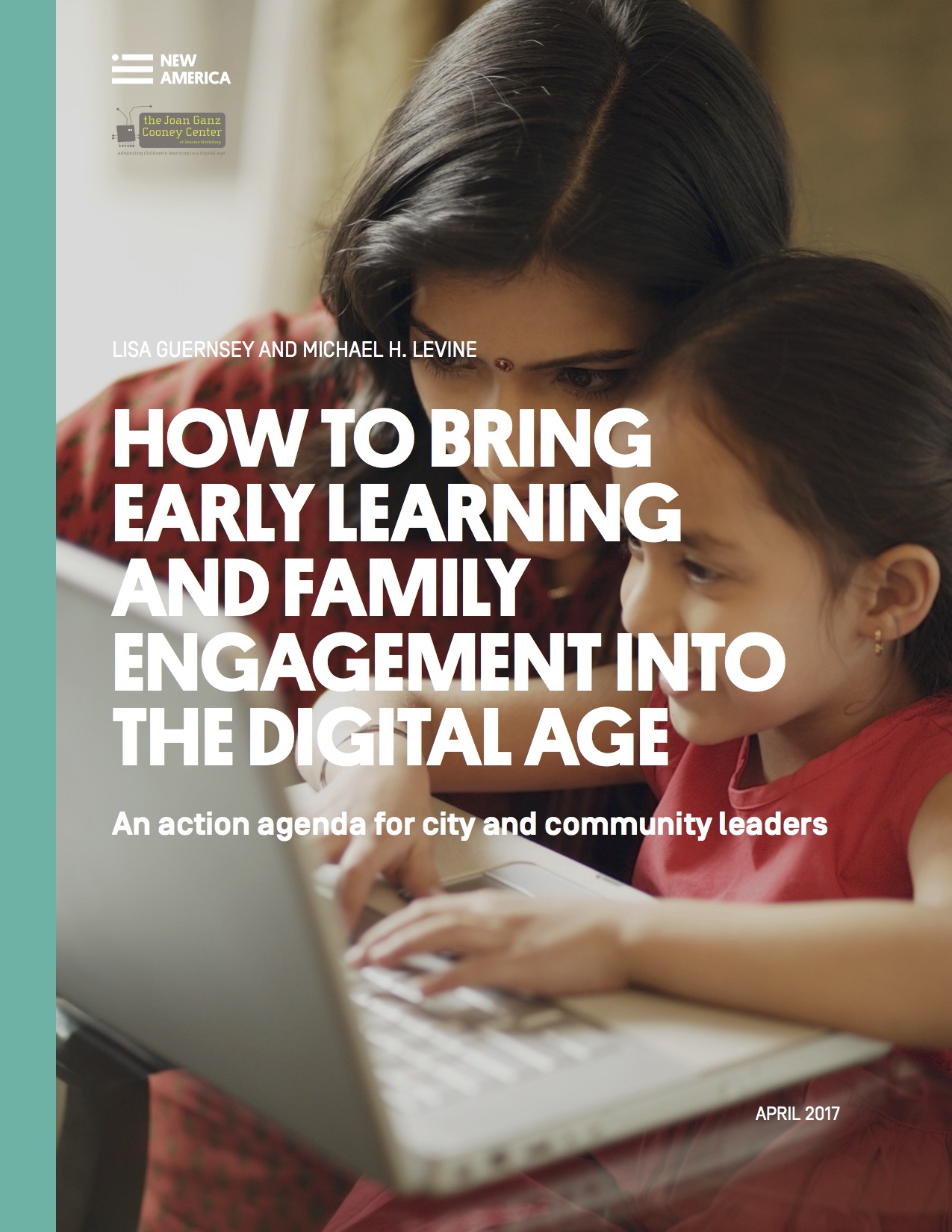 Promoting early learning through the support and empowerment of families—especially those who are under-resourced—has become an imperative for education leaders nationwide. In 2014, New America’s Learning Technologies project in the Education Policy program published Envisioning a Digital Age Architecture for Early Education to help leaders visualize success in this media-infused environment. Since then, New America and the Joan Ganz Cooney Center at Sesame Workshop have joined forces to document initiatives that use technology to connect with vulnerable families and improve educational outcomes.
Promoting early learning through the support and empowerment of families—especially those who are under-resourced—has become an imperative for education leaders nationwide. In 2014, New America’s Learning Technologies project in the Education Policy program published Envisioning a Digital Age Architecture for Early Education to help leaders visualize success in this media-infused environment. Since then, New America and the Joan Ganz Cooney Center at Sesame Workshop have joined forces to document initiatives that use technology to connect with vulnerable families and improve educational outcomes.
Program leaders are using interactive tools such as on-demand video and text messaging to inspire and reassure parents, to share learning materials between formal and informal settings, and to bring parents closer to their children’s learning. Some communities are also taking steps to prepare educators as media mentors to help families and children be choosy about media and learn how to use technology for learning.
But so far, these efforts are sporadic and fragile. Very few are fully sustainable, proven, or ready to scale up. Leaders need a plan, using relevant resources. New America and the Joan Ganz Cooney Center have developed this interactive toolkit, which is a compilation of resources from early learning and family engagement organizations, that is designed to help inform community leaders’ thinking as they develop and improve new and existing programs.
In 2017, New America and the Joan Ganz Cooney Center published How to Bring Early Learning and Family Engagement to the Digital Age: An Action Agenda for City and Community Leaders, which detailed four steps to build more advanced systems for family engagement and early learning. More information on these steps can be found in this interactive toolkit.

In addition to the interactive toolkit for community leaders, New America and the Joan Ganz Cooney Center at Sesame Workshop have developed a project called Integrating Technology in Early Literacy (InTEL), which collected information through two surveys. The aim is to create data visualization tools that highlight early learning and family engagement programs in the United States that have integrated technology to meet the needs of young children and families. Survey results from 2016 resulted in a published report and accompanying data visualization tools, including interactive maps. We conducted a second survey two years later, and the results and analysis are published here.
The InTEL project began as a way to think about how programs around the U.S. were tackling the question of how young children learn language and literacy skills through family engagement programs in the Digital Age. In the second iteration, the scope of the project expanded to include other content areas, such as early science, technology, engineering, and math (STEM), recognizing the research that shows that developing early math skills can advance the development of language and literacy. The data visualization tools found in InTEL 2016 and InTEL 2018 show where innovative programs are located, how those programs are designed, and what evidence of impact the programs were able to share with our research team.
In the 2018 InTEL map, we profile 40 programs. Sixty-eight percent of the programs did not provide any evidence of impact through our survey. Seventy percent of programs identified themselves as family engagement programs. All of the programs were funded through a combination of sources, such as federal dollars, state dollars, and philanthropy. Finally, in this dataset, the most popular software used were websites, apps, and online videos.
In the 2018 InTEL map, 40 programs were profiled. (There were 37 programs profiled in 2016.) We sorted programs by their evidence of impact, type, languages, ages served, number of children served, and technology used.
Seventy percent of the programs did not provide any evidence of impact through our survey. Seventy percent of programs identified themselves as family engagement programs. All of the programs were funded through a combination of sources, such as federal dollars, state dollars, and philanthropy.
In InTEL 2018, the technology was organized into two categories: device and software. In this dataset, the most popular software used were websites, apps, and online videos. The most popular devices are tablets, smartphones, and laptop or desktop computers.
Twenty-eight (70 percent) of the programs on the map were rated as having no evidence, and six were rated developing. Three were rated promising and another three were categorized as strong. These programs provided evidence to inform these ratings. Information on specific research studies and reports is documented in each of the program profiles. This lack of evidence spotlights an area of enormous challenge for program and community leaders, but also an opportunity for additional investment and improvement.
There are 40 programs on the map. Over half of the programs (58.5 percent) started after 2010. The majority of the programs (28) provide parent education or family support. Other programs (18) have school- or center-based initiatives. Eighteen programs use public media partnerships, and another 17 are geared toward professional learning for educators. Fifteen programs are connected to a museum, library, or community center. Two are health care initiatives and two are a part of an afterschool program.
The various approaches in the dataset show the many options that communities can use to engage young children and their families. In many cases, the aim is to build an ecosystem of support so children can grow up to be learners who are adept at using and understanding many different resources. Librarians, family engagement coordinators, home visitors, pediatricians, early childhood educators, and other professionals who interact with young children all can help families learn about the best ways to promote their children’s healthy development.

